The equation √x=t+9 gives the variation of displacement with time. Which of the following is correct ?
Velocity is proporational to the square of time
Velocity is inversely proporational to time
Acceleration depends upon time
Acceleration is constant
The correct Answer is:D
To solve the problem, we start with the given equation that describes the relationship between displacement x and time t:
1. Given Equation:
√x=t+9
2. Squaring Both Sides:
To eliminate the square root, we square both sides of the equation:
x=(t+9)2
3. Expanding the Right Side:
Now we expand the right side:
x=t2+18t+81
4. Finding Velocity:
The velocity v is the rate of change of displacement with respect to time, which can be expressed as:
v=dxdt
To find dxdt, we differentiate x with respect to t:
dxdt=ddt(t2+18t+81)=2t+18
5. Finding Acceleration:
The acceleration a is the rate of change of velocity with respect to time, which can be expressed as:
a=dvdt
We differentiate v with respect to t:
dvdt=ddt(2t+18)=2
6. Conclusion:
From our calculations, we find that:
- The velocity v=2t+18 is not constant and depends on time.
- The acceleration a=2m/s2 is constant.
Thus, the correct option from the given choices is that the acceleration is constant and equal to 2m/s2.
√x=t+9
To eliminate the square root, we square both sides of the equation:
x=(t+9)2
Now we expand the right side:
x=t2+18t+81
The velocity v is the rate of change of displacement with respect to time, which can be expressed as:
v=dxdt
To find dxdt, we differentiate x with respect to t:
dxdt=ddt(t2+18t+81)=2t+18
The acceleration a is the rate of change of velocity with respect to time, which can be expressed as:
a=dvdt
We differentiate v with respect to t:
dvdt=ddt(2t+18)=2
From our calculations, we find that:
- The velocity v=2t+18 is not constant and depends on time.
- The acceleration a=2m/s2 is constant.
Similar Questions
The motion of a particle is given by a straight line in the graph given above drawn with displacement (x) and time (t). Which one among the following statements is correct ?
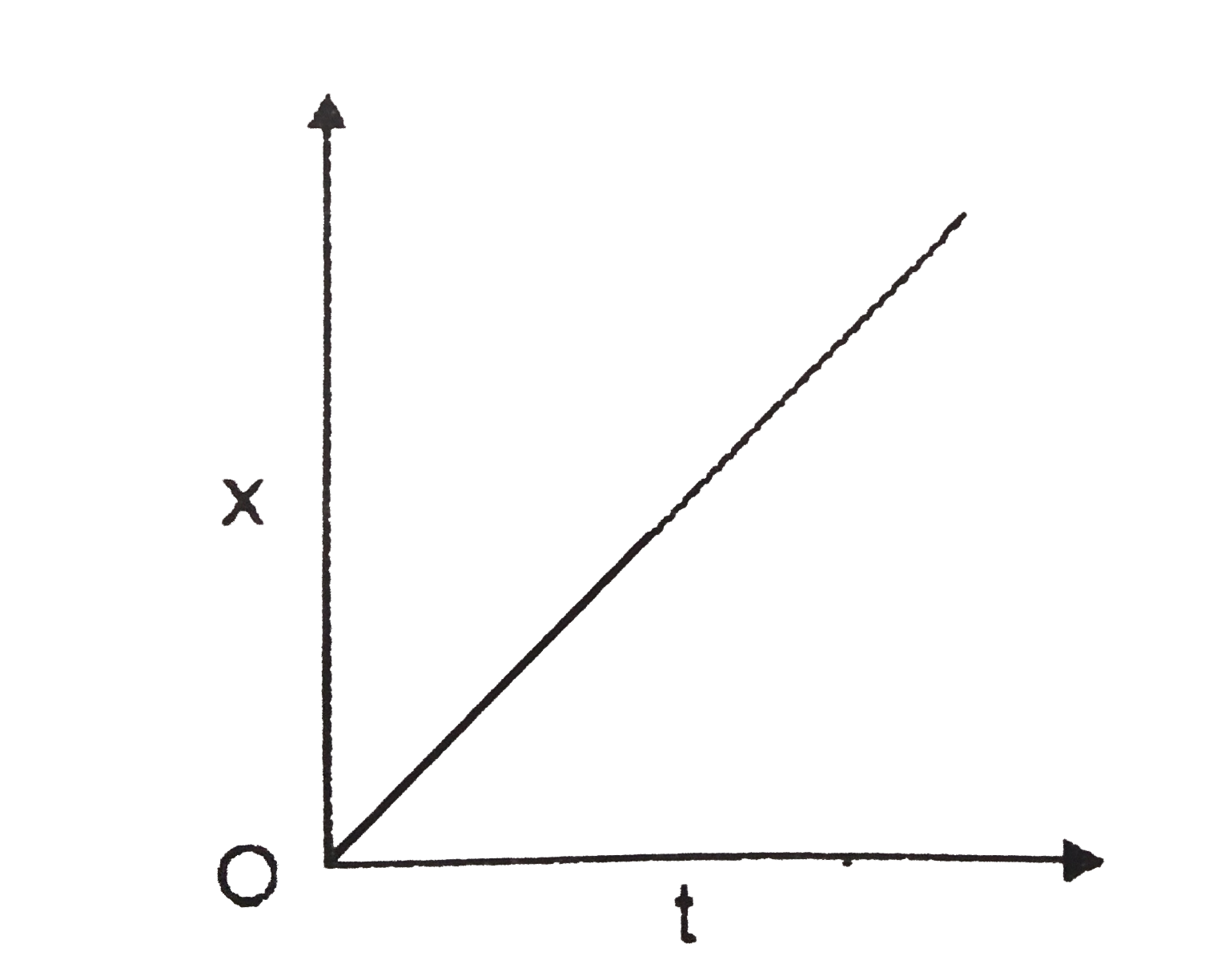
View SolutionThe displacement (x) - time (t) graph of a particle is shown in figure. Which of the following is correct?
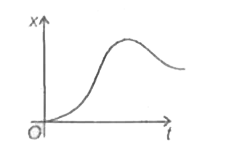
View Solution
Knowledge Check
The variation of displacement with respect to time is depicted in the following figure. The figure shows that
 Aacceleration is constantBvelocity is constantCthe motion is acceleratedDthe motion is retarded and finally the particle stops
Aacceleration is constantBvelocity is constantCthe motion is acceleratedDthe motion is retarded and finally the particle stopsThe variation of displacement with respect to time is depicted in the following figure. The figure shows that
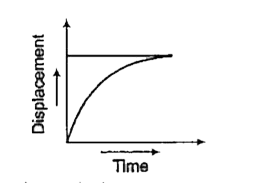 Aacceleration is canstantBvelocity is constantCthe motion is acceleratedDthe motion is retarded and finally the particle stops
Aacceleration is canstantBvelocity is constantCthe motion is acceleratedDthe motion is retarded and finally the particle stopsThe displacement (x)-time (t) graph of a particle is shown in figure. Which of the following is correct ?
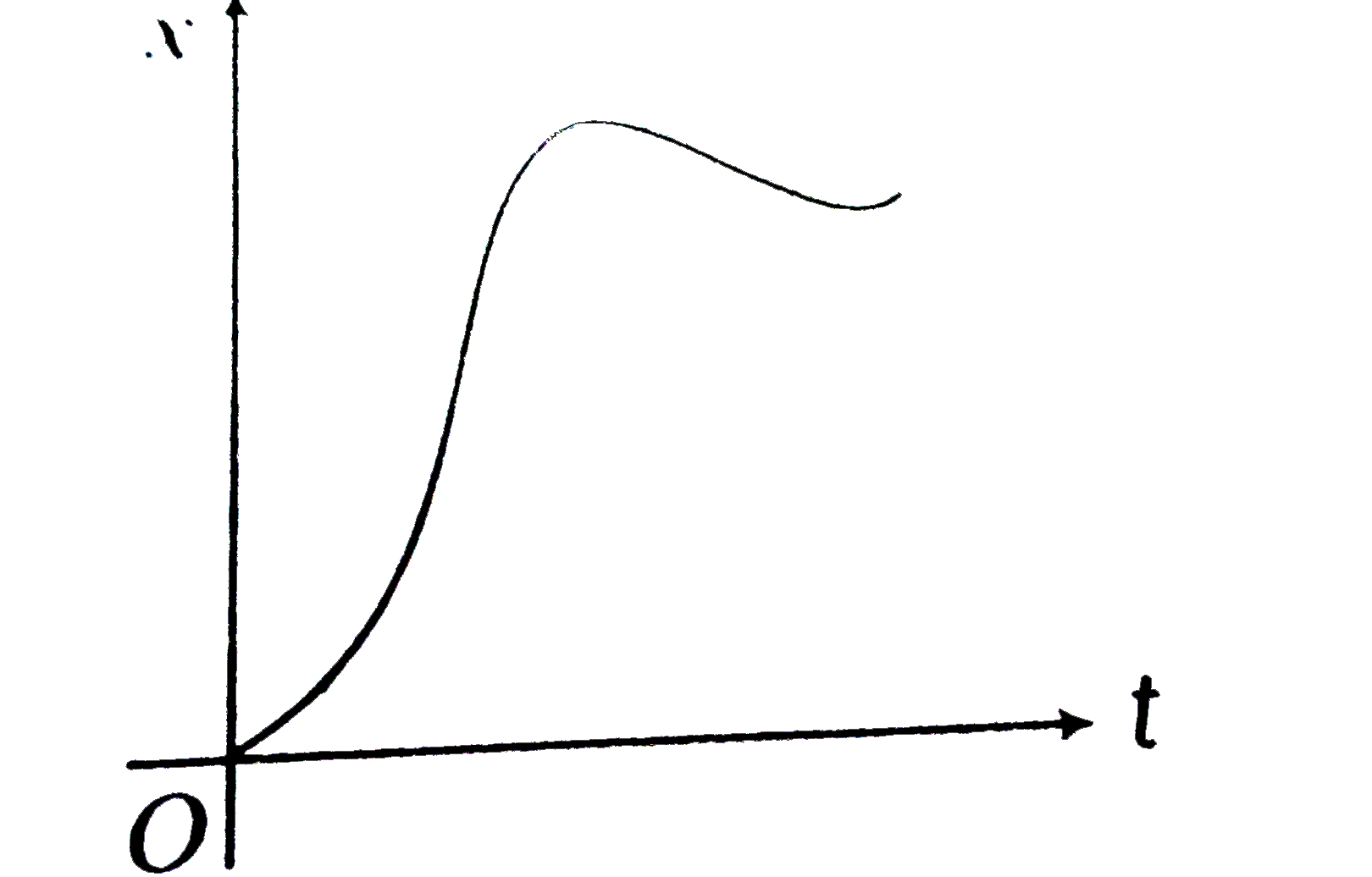 AParticle starts with zero velocity and variable accelerationBParticle starts with non-zero velocity and variable accelerationCParticle starts with zero velocity and uniform accelerationDParticle starts with non-zero velocity and uniform acceleration
AParticle starts with zero velocity and variable accelerationBParticle starts with non-zero velocity and variable accelerationCParticle starts with zero velocity and uniform accelerationDParticle starts with non-zero velocity and uniform acceleration
The given graph shows the variation of velocity with displacement. Which one of the graphs given below correctly represents the variation of acceleration with displacement ?

View SolutionThe graph shown the variation with times t of the velocity v of an object . Which one of the following graphs best represents the variation of acceleration a of the object with time t?
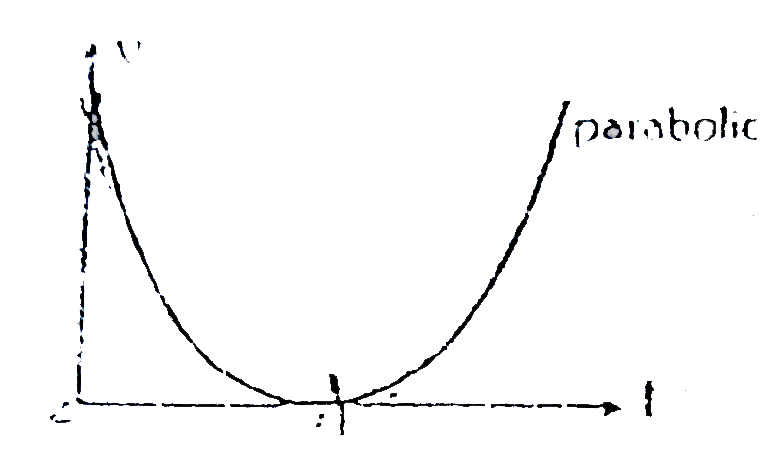
View SolutionGraph between velocity and displacement is shown in the following figure:
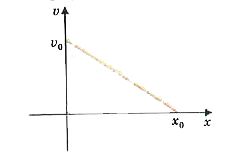
Which of the following graphes represents the correct variation of acceleration with displacement
View SolutionThe displacement of a particle varies according to the relation X=3sin100t+8cos250t. Which of the following is/are correct about this motion.
View SolutionThe displacement of a particle varies according to the relation x = 3 sin 100t + 8 cos2 50t. Which of the following is/are correct about this motion.
View Solution